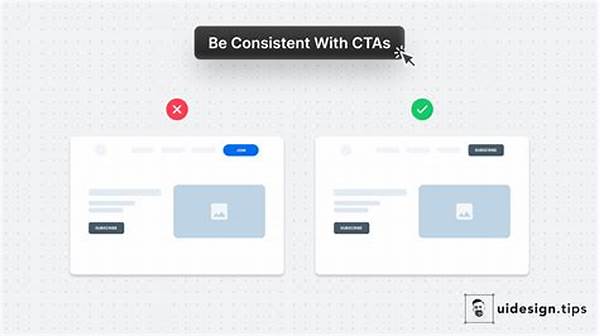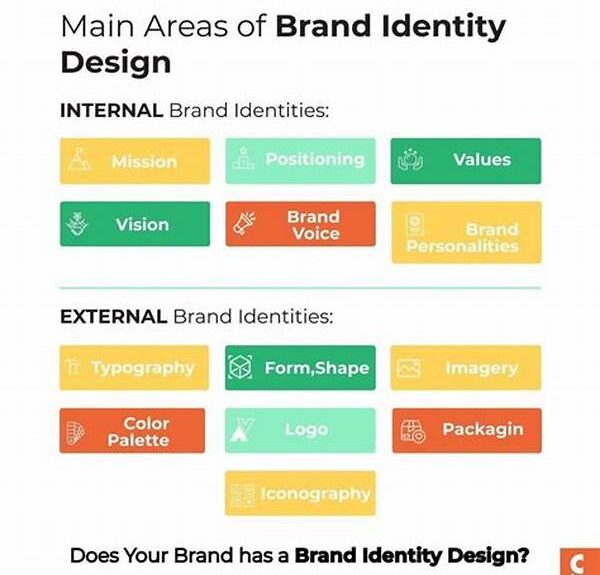In today’s competitive digital landscape, establishing a strong and recognizable brand is more crucial than ever. One of the key elements in achieving this is maintaining consistency across all platforms and touchpoints. This not only helps in creating a unified brand image but also enhances user experience by providing familiarity and reliability. Branding and interface consistency go hand-in-hand, ensuring that your brand’s values and identity are seamlessly reflected throughout your digital interfaces.
Read Now : Driving Traffic To Art Print Website
The Importance of Branding and Interface Consistency
Branding is more than just a logo or a set of colors; it encapsulates the ethos, values, and promises of a company. Consistency in branding across different interfaces reinforces recognition and trust among users. When users repeatedly encounter consistent elements such as logos, color schemes, and typefaces, they can easily identify and connect with the brand. This bonding reduces cognitive load and creates a seamless transition between different platforms, enhancing user satisfaction.
Beyond recognition, interface consistency ensures that users have a stable and familiar environment. Consistency in UI elements like buttons, navigation bars, and layouts helps in establishing predictable user journeys, reducing the learning curve for new users. Moreover, consistent interfaces minimize user errors and increase efficiency, as users know what to expect and can effortlessly navigate through your applications or websites. Overall, branding and interface consistency contribute to a coherent user experience, ultimately shaping how users perceive your brand and determining the success of your digital presence.
Building a Unified Brand Experience
1. Visual Identity: Branding and interface consistency starts with a cohesive visual identity. It incorporates colors, logos, typography, and imagery that reflects your brand’s essence across all channels.
2. User-Centric Design: Prioritize user experience by ensuring consistency in navigation, functionality, and interactions, allowing users to intuitively engage with your product.
3. Content Strategy: Create a unified tone of voice and message that resonates with your branding. Interface consistency relies on clear, concise, and consistent content across platforms.
4. Feedback Mechanisms: Implement consistent feedback systems such as notifications and alerts. This reinforces trust and engagement, aligning seamlessly with your brand’s voice.
5. Responsive Design: Branding and interface consistency should extend to all devices, ensuring seamless functionality and appearance, whether on mobile, tablet, or desktop.
Strategies for Maintaining Branding and Interface Consistency
Establishing branding and interface consistency is vital, but maintaining it poses a continuous challenge. Brands need to deploy strategies that ensure their identity remains cohesive over time. Start by creating detailed brand guidelines that clearly outline visual and messaging elements. These guidelines serve as an invaluable resource for designers and developers, forming the foundation for consistent application across all interfaces.
Regular audits are another effective strategy for maintaining interface consistency. Evaluate your digital touchpoints periodically to ensure adherence to your brand guidelines. Feedback from users can provide insights into aspects where consistency might have lapsed. Moreover, with technology and design trends constantly evolving, it’s essential to update brand guidelines as necessary while staying true to the core brand identity. Continuous training for teams across departments also plays a crucial role, ensuring everyone is aligned with the brand’s vision and goals.
Practical Considerations for Branding and Interface Consistency
Several practical considerations determine the success of branding and interface consistency:
1. Collaboration: Encourage interdisciplinary collaboration, ensuring marketing, design, and development teams work towards a unified brand vision.
2. User Feedback: Listening to user feedback helps in identifying inconsistencies and allows for continuous improvement of user experience.
3. Scalability: Design interfaces with scalability in mind, ensuring they’re adaptable to future brand evolutions without compromising consistency.
4. Technology Integration: Leverage the latest design technologies and tools to maintain and enhance branding and interface consistency.
5. Global Considerations: For brands with a global presence, ensure localization efforts maintain branding and interface consistency without losing the essence of the brand.
6. Cross-Platform Presence: Ensure consistent branding and interfaces across mobile apps, websites, and social media platforms to create a holistic brand experience.
Read Now : Essential Guidelines For Consistent Logos
7. Design Systems: Implementing a robust design system ensures consistency in components, making it easier to deliver a unified brand experience.
8. Ongoing Training: Regular training sessions keep all team members informed and aligned with the newest guidelines and brand directions.
9. Performance Metrics: Use analytics to measure the effectiveness of your branding and interface consistency, locating areas of improvement.
10. Continuous Monitoring: Ensure regular monitoring to catch inconsistencies and adapt quickly to maintain uniformity and trust in your brand.
Branding and Interface Consistency in User Experience
Branding and interface consistency play a pivotal role in shaping an excellent user experience. They work synergistically to build trust, familiarity, and efficiency among users. Consider a scenario where a brand has a beautifully designed mobile app but a confusing, inconsistent website interface. This inconsistency can confuse users, diminishing their trust and potentially prompting them to turn to competitors.
Consistency acts as a silent tool that reassures users of a brand’s credibility. When users encounter familiar elements like navigation bars, button styles, and typography across different platforms, they develop a sense of ease and trust. This consistency minimizes the learning curve and decreases the likelihood of user errors, as users can navigate platforms intuitively. It’s the subtle power of predictability in user interfaces that enhances the overall experience and encourages user retention.
Moreover, consistent branding contributes to a stronger brand identity and recall. Through uniformity in visual elements and messaging, brands become more memorable. When users see consistent logos, color schemes, and design structures in communications, both online and offline, it reinforces brand recognition and loyalty. Thus, branding and interface consistency are fundamental in crafting a seamless and enjoyable user experience, preserving the integrity of a brand while fostering enduring user relationships.
Benefits of Ensuring Branding and Interface Consistency
Ensuring consistency in branding and interface design can yield numerous benefits for businesses. First, it builds customer trust. When users recognize and understand a brand through consistent elements, it establishes a reliable and professional image. Such consistency creates a seamless experience valued highly by users.
Furthermore, it enhances brand recognition. Consistent branding ensures that elements are recognizable regardless of where they are encountered, solidifying brand identity. This visibility and recognition are vital in crowded markets where standing out is challenging. In addition, branding consistency provides a competitive edge. Brands with consistent experiences are more likely to stay top-of-mind for potential customers.
Operational efficiency is another significant benefit. Consistent branding and interface design streamline design and development processes, saving time and resources. It allows for easier updates and adaptations across platforms without the risk of disjointed experiences. This harmonization supports effective communication within teams and ensures all parts of a company deliver a unified brand message.
Finally, branding and interface consistency contribute to higher user satisfaction and engagement. Users who experience cohesive branding are more likely to engage positively with a brand. This engagement can lead to increased customer loyalty and, ultimately, to sustained business growth and success.
Conclusion: Embracing Branding and Interface Consistency
In conclusion, branding and interface consistency are indispensable elements of a successful digital strategy. They are not mere aesthetic choices but fundamental components that shape user perceptions, experiences, and relationships with a brand. For businesses seeking long-term growth and a solidified market presence, prioritizing these elements is crucial.
To embrace branding and interface consistency, start by developing clear guidelines that spell out your brand’s visual and verbal identity. Regularly engage in team collaborations, ensuring all departments are aligned with the brand’s goals and strategies. Make informed adjustments based on user feedback and industry trends, ensuring that your brand remains relevant and engaging.
In a world where consumers are bombarded with countless brand messages daily, consistency stands as a beacon of stability and reliability. By investing in strategic and thoughtful consistency, your brand can cut through the noise, build lasting connections, and foster user loyalty that drives sustained success.



